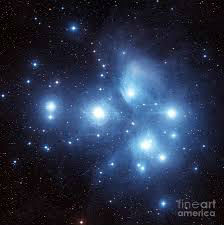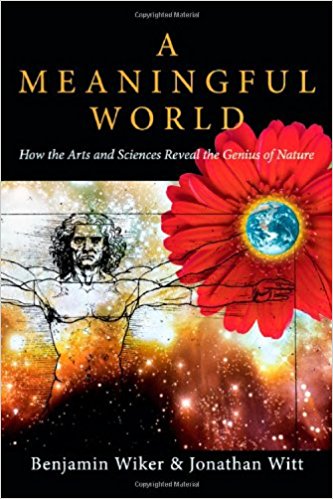The Universe and Dr. Tyson: A Pastor Responds
By Neil Earle

Memphis, TN: The elegant Orpheum Theater was the venue on February 7, 2018 for “the people’s astrophysicist,” Dr. Neil deGrasse Tyson, who offered us ten things we should know about the universe – done in his usual jocular style.
This charismatic director of the Hayden Planetarium in New York City and a renowned exponent of physics on television did not disappoint his jam-packed audience. Many were children as young as nine years old and eager they were to hear their hero help lead them into a possible career in science.
My wife and I were there because I know Tyson as a competent heir to 1980s science popularizer Carl Sagan, an obvious Tyson hero. But I was also there because both Sagan and Tyson make excellent dialogue partners for Christian journalists such as myself who are convinced that the universe is the stage setting for the biblical drama of Redemption and yet know that science has the other half of the story (or as much as we can know). Tyson loves to take pot-shots at religious fundamentalists, but in many cases he may have a point.
So here, though I am no scientist, is my Christian-based critique on his ten points, at least as far as my pen could copy.
Let's follow Dr. Tyson and begin at the beginning in reverse order.
Ten, the universe has a boatload of stars. The latest estimate is one sextillion stars in the known universe, that’s 10 to the power of 21. There are actually more stars than there are grains of sand on earth! That’s a lot. Later he quoted 100,000,000,000 stars in our galaxy, a number that hadn’t changed I was glad to hear since I first read it in the 1960s. No problems for Christians with this as the greater the creation (if you choose) the greater the Creator.
 The Pleiades mentioned in Job 38:31.
The Pleiades mentioned in Job 38:31.
Nine: the Universe is bad for your ego. This is his longest point. As late as the ’60s, Tyson claims, biology books were published showing a “Tree of Life” with white male humans at the top of the tree. (The audience tittered.) Now the tree looks like a spiral with nothing definite at the center but faint indentations fanning out along the circumference. That more complex chart shows us humans next to Mus Musculus (“Mice”) which is why experiments on mice are conducted to test theories (more laughter). “Our urge to feel special focuses on difference,” Tyson added, “But we are actually part of a great unfolding ecosystem.”
This will be a theme running through the evening. Yet no big clash here with Bible verses such as Psalm 8 and Isaiah 41:14 that talk about our low status in comparison to the Creator. “We can fit one million earths into our sun,” adds Tyson, “and our planet would be passed over as debris by aliens since we ‘live in the suburbs’ of the galaxy.”
Fascinating, of course. Dr. Tyson then launched into the theory of the “multiverse,” an idea all the rage in physics today. This theory has our whole universe encased in some kind of cosmic bubble next to other universes. “Logical, since the universe doesn’t do things in one’s.” Rather than make us feel insignificant, Dr. Tyson adds, “all of this should be seen as our being participants in the universe” – a Sagan-like note he will keep sounding, perhaps, say some, to answer the accusations of meaninglessness or the fact that physics is out of ideas on the subject of Origins. (Just saying.)
So the multiverse intrigues us but is not something to take to the bank – yet. True science must have a way of testing propositions, but Tyson knows this.
Eight, the Universe is a time machine. Hubble telescope teaches us that light from the moon takes 1.3 seconds to reach us. That means we are seeing things as they were 1.3 seconds ago. In Orion we see stars that have been born in explosions but we presently see them as they were eons ago. Orion happens to be mentioned in the Bible three times (e.g. Job 9:9) so no big deal here for any Christians who do not subscribe to the 6000 year old creation.

Seven, the Universe is big, molecules are small. There are more water molecules in a glass of water than glasses of water in all the world’s oceans. The water we use and which comes from our kidneys (laughter) find its way back into the ecosystem. “Thus there is a connectivity that scatters and yet joins us all.” That, again, is part of the transcendental gloss the Sagan-Tyson school puts on things and makes it appealing to so many.
Six, Earth…wants to kill us! Tyson’s natural humor and kinetic gestures lighten up this section. Killer asteroids, comet impacts, earthquakes, tidal waves – “these are not good for our health.” Thus, “when we speak of the good earth we are speaking of that small minority of the surface that is habitable.” This is a good point for Christians to ponder. Yes, there are spectacular sights – the Grand Canyon – but no one wanted to be around when it was being scooped out. “There have been more species rendered extinct on this planet (97%) than exist today.” This is a sobering fact but fits the Biblical grid of “guided catastrophism” reflected in numerous texts such as Isaiah 13:9-13.
Five, Earth might not be the home of life. Tyson introduced the term “Panspermia” which refers to the theory that life on earth could have come from elsewhere. “Crashing asteroids will fling rocks into space that can carry microbes.” In 1984 a rock found in Antarctica contained microbes that were only identified when NASA reached the lunar surface. President Clinton casually announced this on August 7, 1996 – “we have evidence that microbes travelled from Mars to Earth.”
This is all very fascinating but a Mars meteorite or two does not a complicated species make – at least not yet. But again, intriguing, if we keep in mind we are speculating from miniscule bytes of evidence and not subjecting the data to rigorous proof – one of the hallmarks of science.
Fourth, Carbon is king (or something like that) and here his lecture began to dim momentarily. Carbons bond everyone and everything and this is part of his “connectivity” argument. I thought of the first Star Trek movie in 1979 where the crew of the Enterprise was referred to as “carbon units.” Point taken. Nothing earth-shaking here.
Three, Life is of the Universe. In true stately Sagan style Dr. Tyson began to build to his climax. Of six essentials the Universe needs to make life, five of them are here on earth. Helium is missing as a human component because “it has a tendency to blow things up.” “We are made of the most common elements in the Universe and they’re the same in every galaxy,” Tyson intoned, “We are cosmically connected…chemically.”
Secondly, the Universe is of Life. “All life comes from 92 elements forged in the stars and life is built up slowly from exploding stars which belch constituents of gas exploding out across the universe,” Tyson explained. “The nitrogen and oxygen from exploding stars is one way to enrich other gas clouds empowering the next generation of life.”
The transcendent note again: “We’re just not in the universe, the universe is in us.”
That is very close to the Carl Sagan quote that was offered to me by a progressive seminary professor that “we are animated star dust.” A provocative thought. This obviously gets beyond Adam and Eve and the literal creation account but it does echo a range of other texts from Isaiah 40-51 that are written from a cosmic “out of this world” perspective. There are four ot five creation accounts in Scripture – a fact not usually considered.
What we can appreciate about the Sagan-Tyson school is the need to inject some sense of purpose or meaning in what we see around us.
And that leads to Point Number One which he had to rush through but comes out as the Universe has given us the gift of relevance, of cosmic belonging. “I’m here. I belong. Not only am I in the universe, the universe is in me.”
This at least is an obvious attempt to forge a satisfying conclusion for believers in strict materialism. Christians will reply that to be made in God’s image – the theology not the geology of Genesis 1 – gives us all the relevance and meaning we could possibly desire.
In the end, Tyson’s presentation was more an entertaining update than a hard-core science lecture but the children in the audience seemed to be impressed. Good. A sense of awe and wonder engendered this early can lead to some surprising developments later.
For, in the end we all benefit when both science and religion keep open minds as they engage each other. Science writer John Bell writes that “we have reached the end of human capacity to form a sharp picture of what is going on,” when it comes to the Universe. Hence the need to escape the dilemma through Mars rocks and exploding gas clouds. Conservative Christians are convinced that the One who calls all the stars by name did the creating (Isaiah 40:26) but he hasn’t shown us how. He’s hidden the flow charts. That means the dialogue must continue and it helps to do it with a sense of humor and panache as represented by Neil deGrasse Tyson.
(Neil Earle is an internationally known Christian journalist who recently moved to Memphis. His website is asecondlook.info.)